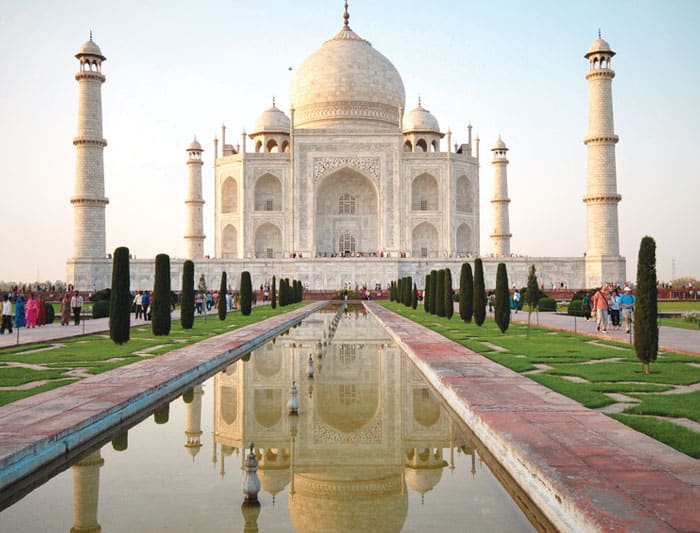India, the seventh largest country in the world, has no shortage of quality attractions to provide you some of the most memorable experiences of your life. This vast country in Asia boasts of an endless range of cultures, historically important archeological sites, exotic cities, delectable cuisines, and diverse landscapes. If you are planning to visit India, you can’t afford to miss the following 5 places.

Agra
If you want to visit a single place in India, it should be Agra. Hardly anyone misses out beholding the famous Taj Mahal on a trip to Agra. This magnificent architectural beauty in Agra is one of the Seven Wonders of the World. The white marble dome shaped mausoleum was built by Mughal Emperor Shah Jahan in memory of his most beloved wife Mumtaz. But your visit to Agra should not be limited to only Taj Mahal as this great Indian city boasts of many other quality attractions including Mehtab Bagh, Tomb of Akbar, Agra Fort, Jama Masjid and Fatehpur Sikri.
Kerala
Kerala is known for its enchanting backwaters and the natural beauties of this place are sure to make you fall in love with it. The houseboats in Kerala are famous for quality and unique accommodations and staying in one of such houseboats can surely be one of the most memorable experiences of your lifetime and the best option to behold the stunning landscapes of the area. Make sure you don’t miss out checking out the views of the nearby hill stations and mesmerizing waterfalls of this stunning place. For more info visit www.greavesindia.com
Goa
Goa might be the smallest of all the states in India, but it is one of the most visited states in India as well. There is hardly anybody who does not love relaxing in a beach and taking a sunbath. And if you want to find the best beaches in India, you have to go to Goa. The coconut palms, beautiful sunset views and exotic beaches of Goa will ensure you enjoy every second of your stay in Goa. Some of the must-visit Goa beaches include Cavelossim Beach, Candolim Beach, Agonda Beach, and Mandrem Beach.

Jaipur
Jaipur is popularly known as the pink city for the pink colored walls of its buildings. In fact, Jaipur is one of the richest travel destinations in India in terms of archeological treasure. The famous attractions in Jaipur include Hawa Mahal, City Palace, Jantar Mantar Observatory, Nahargarh Fort, Jaigarh Fort and Amber Fort and Palace. Jaipur is the place to be if you want to taste some of the most delectable Rajasthani cuisines.
Kashmir
If you love nature, you will love Kashmir. Popularly known as the Paradise on Earth, Kashmir boasts of beautiful lush green valleys, Alpine villages, snow clad mountain peaks, and gushing waterfalls. Admiring the beauty of famous Dal Lake in Kashmir is one of the must-have experiences on a trip to India.
India is a country with limitless number of quality attractions. There are more quality places such as Mumbai, Delhi, and Amritsar. If you have time left after visiting the above mentioned 5 places, consider exploring a few more. Before you visit India, don’t forget your pancard ID, to learn more check out https://www.pancardseva.co.in.